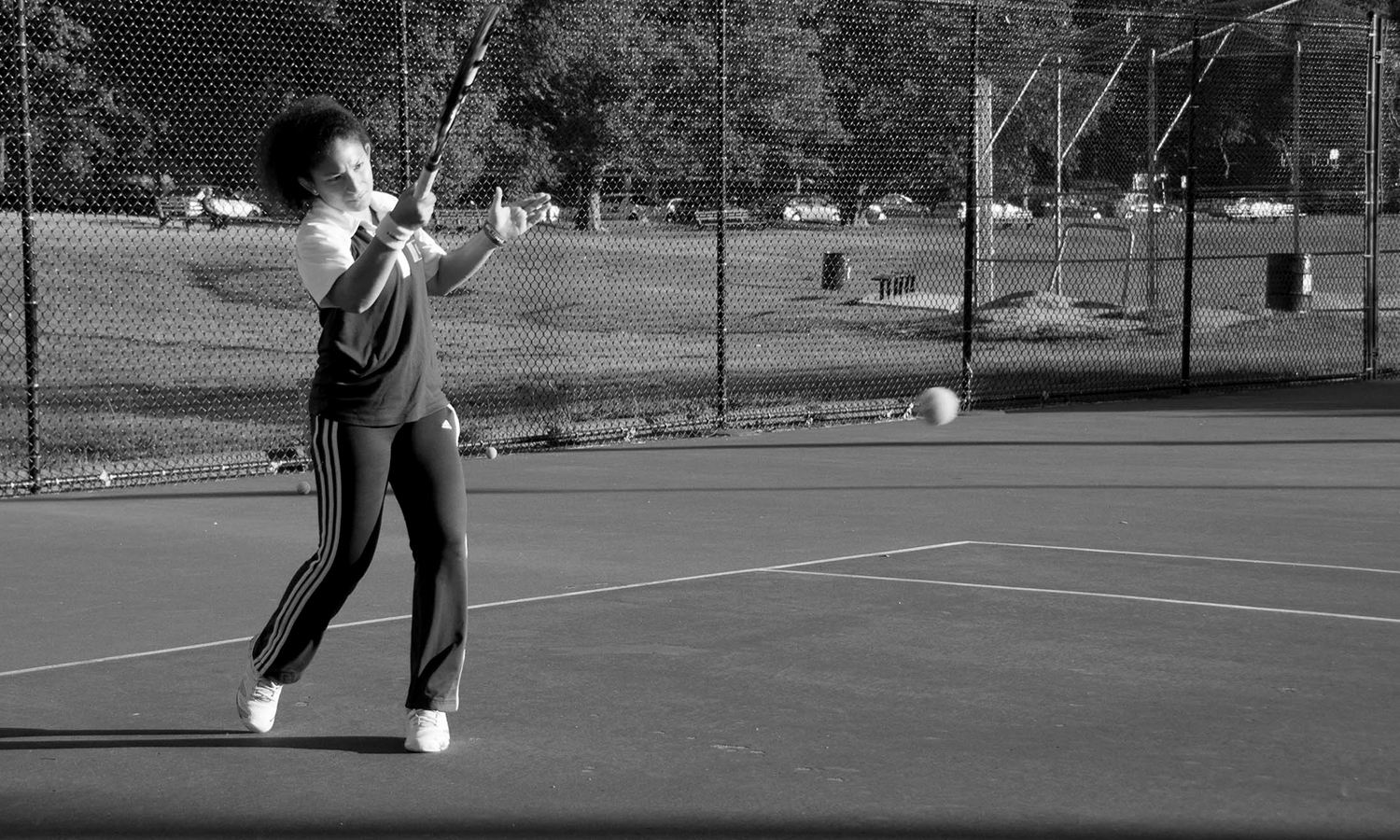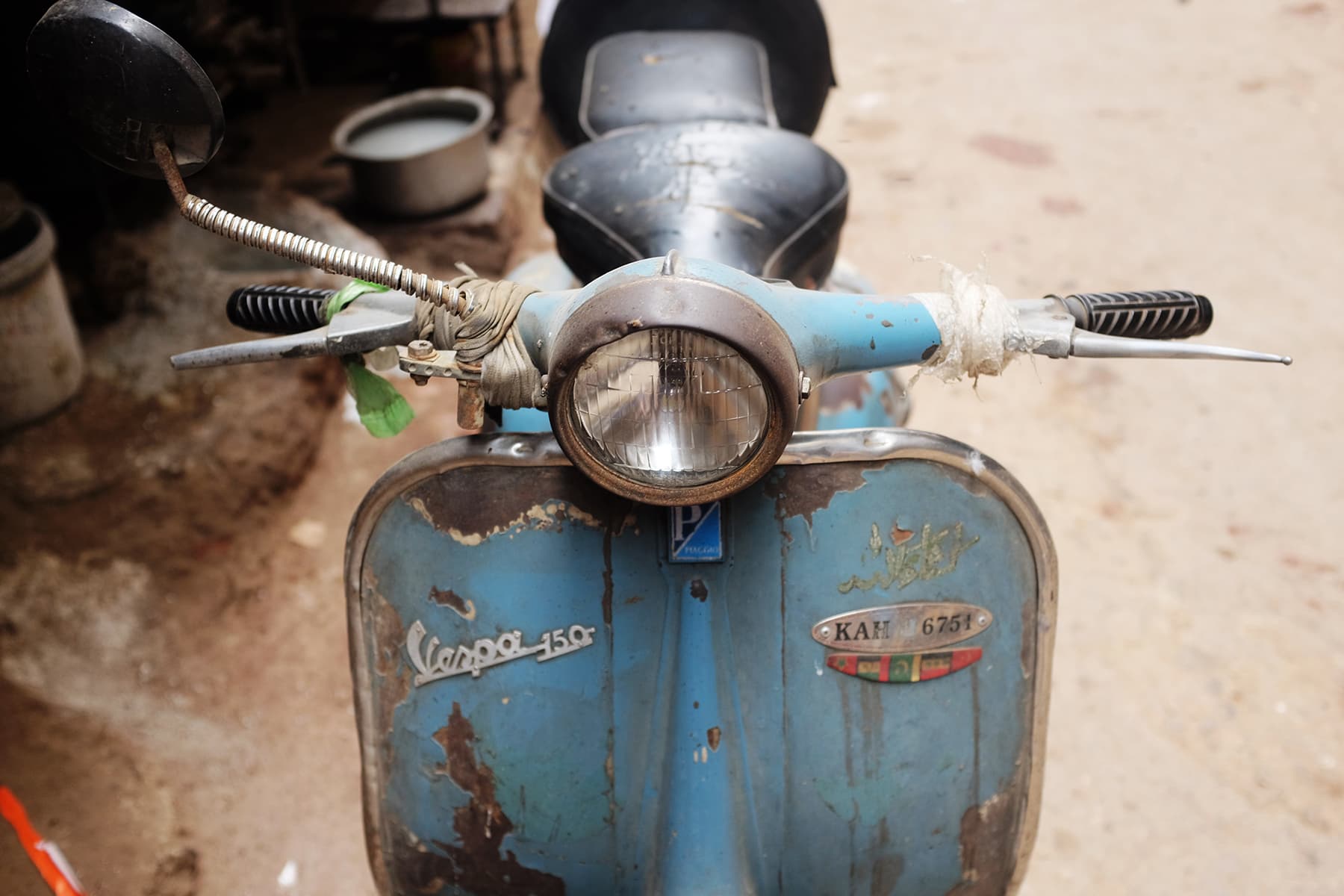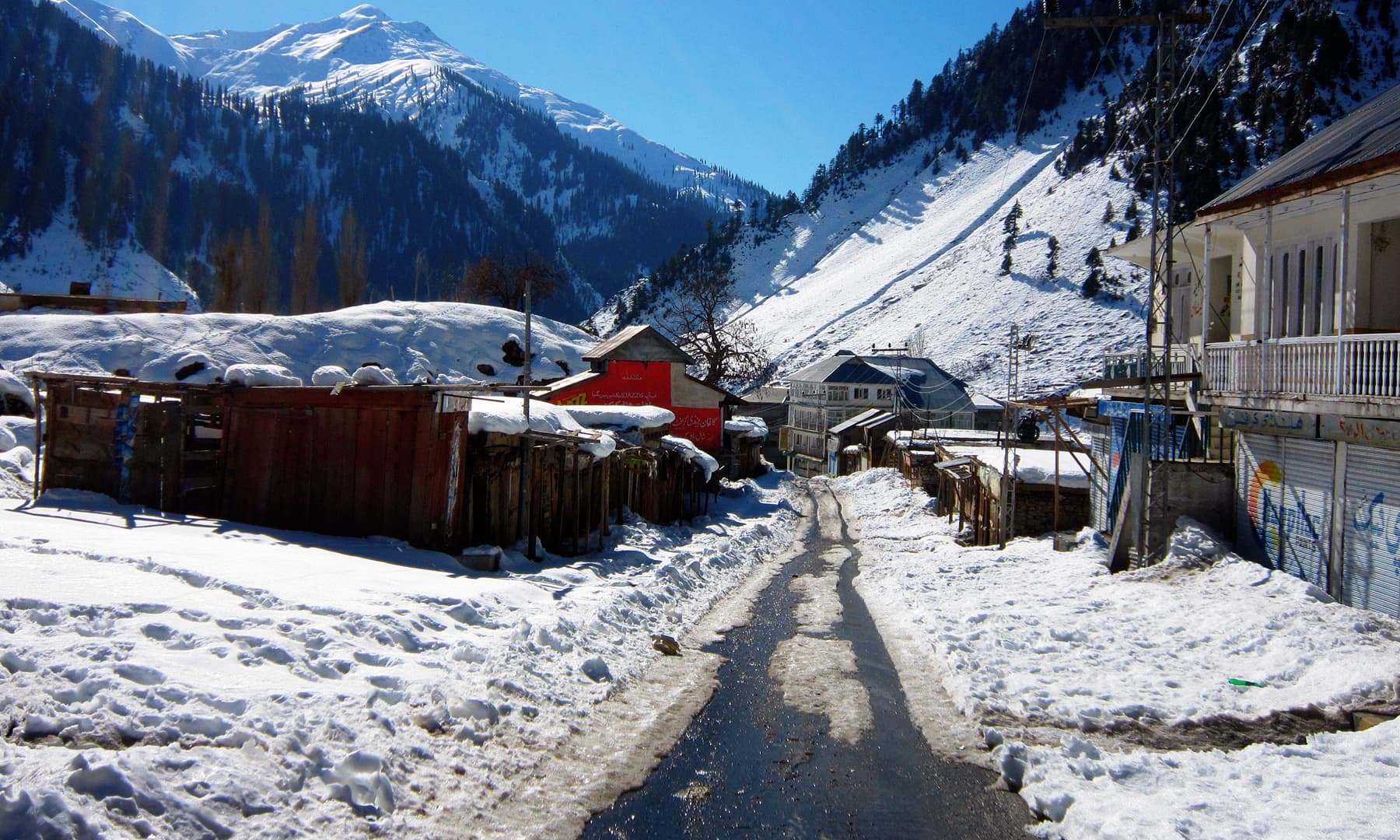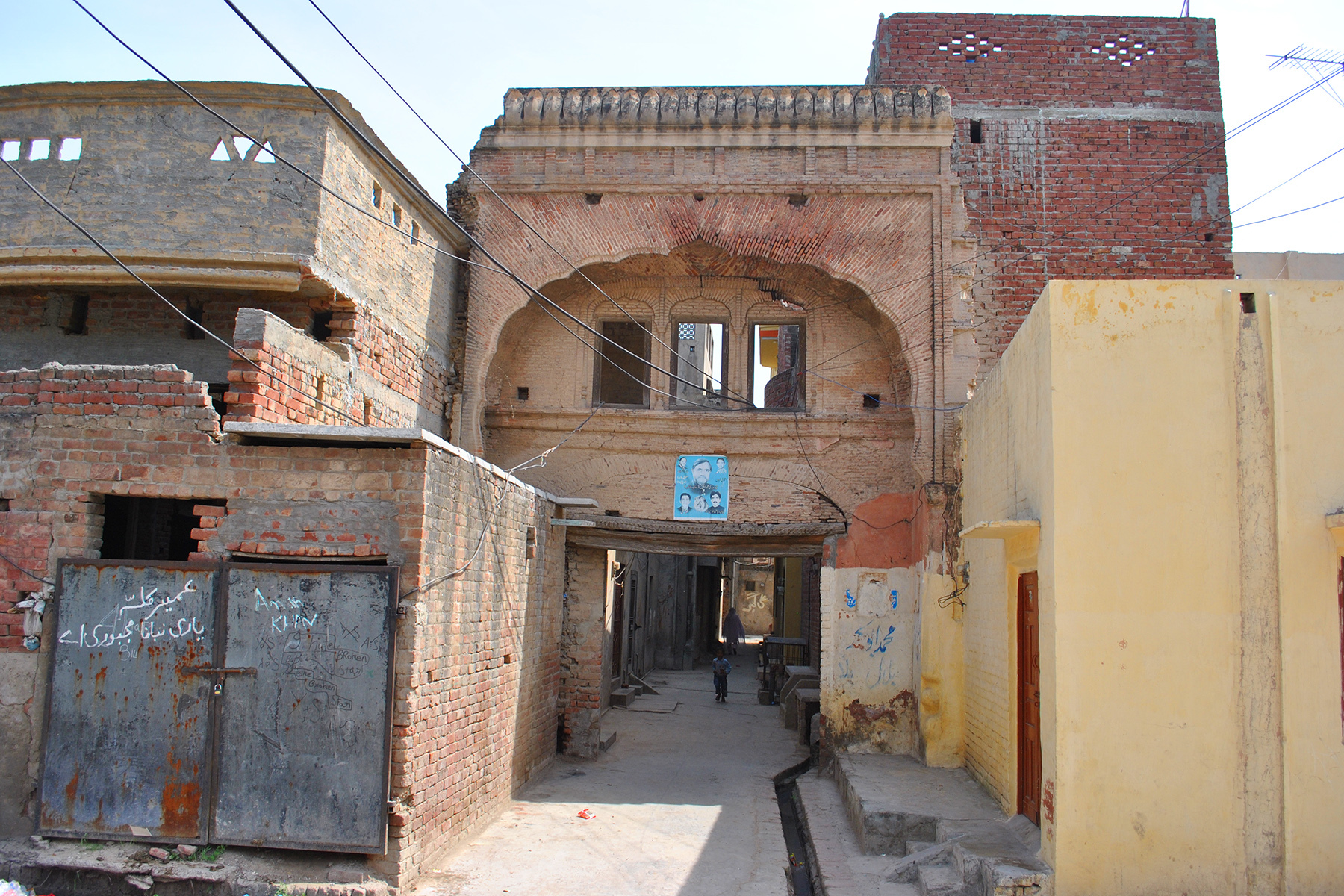The morning I left home to wander in snow and meet the great Saif-ul-Malook Lake in its frozen glory, the mountains of Hindu Kush had seen the last snow shower of the season; mild rays from the sun had just kissed the eaves of the roof of my house; a fresh red rose in the flower pot had just blossomed; my wristwatch told me it was eight o'clock.
Somewhere far away, a song seemed to be playing:
"Awara hoon yaa gardish mein hoon. Aasmaan ka tara hoon"
(Vagabond I have become, or have I fallen into turbulence. A star of the sky I am).
The previous night, a firebrand leader of a political party had given his marathon televised address; in the morning, TV channels were running an ISPR statement denouncing the incendiary speech. The whole episode had me in stitches.
All this had already happened when, cursing hypocrisy, politics, and society, I packed up and embarked on my journey.
As soon as my car left the city behind, the sunlight turned a little too hot. Wilted wheat crops stood on both sides of the road. The spikelets had bent down from their stems. Looking at the shrivelled crops made my heart sink. The continual deluges had tested the patience of farmers in Punjab.
What can man can do but bow his head before Nature?
Before the fields of the lifeless crops could end, I found myself at the bridge over River Chenab. Down in the middle of the River, a boat was being rowed by a lone sailor. He must have been singing, but sitting in the car I could not hear him. It was a holiday and the boatman must have been enjoying his moments of leisure with the waters of Chenab.
The sun was looking at its reflection in the River, where the boat floated down with such ease that it put a smile on my face. I suspect that the boatman had seen me, for he, too, was smiling; the joy of the journey is the same for someone travelling on waters and someone travelling over land.
In this bright morning; the sunshine sprawling itself on both sides of the Grand Trunk Road, which was being trodden with traffic from all sorts of vehicles; my car continued to travel, and then, there was Potohar. The Potohar Plateau.
It is a region with friable clay hills, with pathways traversing these hills, with bushes guarding wild flowers, and with many small forests of acacia. A few herons had perched on three or four of the acacia trees, making it look like they were laden with fruit. The herons were silent and still, completely lethargic, drowned in thoughts, and digging their beaks in their bodies; perhaps, the entire drove had lost the desire to fly.
Speeding along the road, I caught a glimpse of two blue wild flowers that broke the pattern created by orange-coloured flowers. Perhaps, they were oblivious to the touch of butterflies and would glow only when they had travellers in sight. Beautiful but without fragrance. A soft smile from me to them.
The car passed by several cities – tired and sleepy on the holiday – and arrived in Rawalpindi's Pirwadhai area, where I changed the vehicle. It was May Day, the day of the working class and the poor. A number of posters had appeared everywhere at the bus terminal. Some well-known politicians and factory owners were to speak on the labourers' rights at a seminar scheduled for that evening at the PC hotel. They were to flood the podium, set under a German chandelier and decorated with narcissus flowers with their tears, but only after having high-tea of course.
Under one of those huge posters, I saw a life form, bent and knock-kneed with the heavy bundle it carried to earn a day's living. An uncontrollable laugh was subdued by the hubbub of the surroundings. Who would have heard it? Who was the subject, who knows?
Then came the Hazara region; crowded as usual; people busy and yelling; vehicles gridlocked; buildings with colourful window panes, most of them green and blue. When the population centre was left behind, wheat fields filled the landscape.
The health of these crops rejuvenated my spirits. They waved in the breeze with their spikelets full of wheat berries, like a host of healthy damsels. The wheat had grown in abundance and everywhere – in a plot of land between two shops, in backyards, on the banks of a stream, and even in a graveyard, where passages between the graves had been sown.
The health and abundance of these crops made me wonder if the people here grew wheat instead of hair on their heads. A smile for the Hazaras, too.
The vehicle sped up the curvy mountain roads, passing by Army Burn Hall College, Kakol Military Academy, and then Mansehra. It left the city of blue roofs, Balakot, behind. It ran along Kaghan Road and arrived at Paras, where I saw a marble gravestone with a weird inscription, which read:
"He died in an accident while beating drums in the middle of the road."
I rubbed my eyes, but the inscription, instead of revising itself, became more vivid. I laughed so hard, doubled down over myself, that it seemed the world around me had spun over upside down, and that the River Kunhar was flowing upstream – from Balakot to Naran.
Balakot had been left behind, down the mountains somewhere. The curvy road had become steeper. My driver pulled over at the Shogran Stop for a tea-break. Outside the shabby restaurant, a couple of sunflowers had blossomed. A sudden déjà vu hit me; I remembered having travelled up from this spot to Shogran and Siri Paye.
Shogran had seen an influx of tourists, who trampled over its beauty, leaving it jaded. Siri Paye, nonetheless, still retains its strong attraction for tourists as a green plateau on top of the Hindu Kush.
Engulfed in clouds and fog more often than not, it entices me as a rendezvous which allows one to observe Nature play peek-a-boo.
Here, you see numerous small ponds filled with freshwater, meet horse-riders wandering about, and smell wild yellow flowers blooming everywhere. With the Makra Peak set as a backdrop, the beauty of the Siri Paye meadows comes to life.
I resumed my journey. Kaghan went by quietly. The Kaghan Valley gets its name from the village of Kaghan. The River Kunhar flows in the centre of this valley, which spreads over 155 kilometres from the height of 2134 metres, at the Babusar Pass, to the height of 4173 metres. The entire region is dotted with forests and meadows, replicating paradise on earth. It has mountain peaks with heights up to 17,000 feet, including Makra Peak and Malika Parbat.
After crossing over the Naran Bridge, I got a clear view of a hill resort. With the dusk setting in, lights in Naran began to gleam. The bazaar was crowded beyond expectation. Naran had not changed; it looked the way I never wanted to see it. Its clamouring roads, polluting river banks, over-decorated shops, people debating non-issues, commotion, noisy laughter, flamboyance, hollowness, and expensive hotels left me uncomfortable.
All the hotels in Naran had already been booked by tourists swarming this resort.
A skinny girl, strapping a pair of jeans and wearing her hair down, was walking in front of me in the middle of the road, like a model walking on a ramp. I overtook her only to discover that it was actually a boy, who had grown his hair long and decided to wear it down. I found myself giggling; it was the first source of joy in Naran.
I wanted to spend the night in anonymity. My destination was not Naran but Lake Saif-ul-Malook, still frozen and covered with snow, and accessible to the sons of Adam only by virtue of all their strength and determination, and after fighting their way through the snow. The jeep track to the Lake was closed because of the snow. Only once you had gone through this cycle of affliction, did the goddess of water allow you to be dazzled by her beauty.
In Naran, however, anonymity was hard to come by. Hotel rooms were fully occupied and the only way to get accommodation was to introduce myself; I had to put on a show of my craft; I had to reference national interests. And then, finally, a lodging for the night was provided.
As I lay in the room, I recalled my previous odysseys. In the summer, you would find this vale daubed in a hue of green and freshness. After leaving the Naran bazaar, you see a track bending upwards and leading to Lalazar, a picturesque spot.
It’s a narrow and dangerous jeep-track, but the moment you arrive at your destination, fright succumbs to overwhelming happiness. You're welcomed by towering chir pines surrounding a small plain covered with green crops. Potato and beans are the major produce here.
However, from Naran if you do not take the turn to Lalazar and, instead, continue to travel along the same road, you will arrive at Jalkhad, where the River Kunhar spreads its limbs out into the open. Next, you arrive at Baisal. It is from this spot that a trail leads you to a lake cupped in the mountains and covered with wild flowers, the Lake Dudipatsar. An entire day’s arduous trail brings you here.
Dudipatsar with its natural beauty, preserved by its remoteness, sits in the middle of lush green mountains, and with its green transparent water, can cast more than a spell on you. Even the trail leading to the lake mesmerises you with its greenery, wild flowers and brooks.
Again, if you continue to move along the main road from Baisal, you will be welcomed by the Lulusar Lake. Stretching over two and a half kilometres, this Lake, with its dark waters, looked so mysterious even in the daylight, that my heart wouldn't stop thumping against my rib cage.
Moving alongside the spooky Lake, you arrive at the Babusar Pass. Throw a glance below and you would see the Gaitidas meadows and a polo ground. Every year, a polo tournament is held here, with teams from Chilas competing against each other. Perhaps, the game of polo is the only source of entertainment for the locals, including children and old men. After traversing Babusar and crossing-over the Thak Nala, the roads connect itself with Chilas on the Karakoram Highway.
After a night spent reminiscing, I ventured out early morning with a wooden stick in my hand. From a village, around one kilometre from Naran bazaar, I hired a porter who was to serve also as my guide.
The path ahead had been claimed by snow. When I asked him how much he would charge, his response was whatever I wished to pay he would gladly accept. At this moment, he appeared as endearing as a little child, I immediately hired him.
In a few minutes, both of us became part of the snow-covered landscape. We climbed up; the snow wrapped everything, and steep mountains only went steeper. We were temporarily snow-blinded several times when the morning light, however mild, reflected off the snow. Resting, gasping to reclaim our breath, falling, and recovering, we trudged on.
I had not imagined the track to the Lake to be this steeper. The climb was unending. After every one of our stops, my guide had some difficulty suggesting that we should resume our journey. After a while, I conceded, “Yea, let’s go.”
In this snow land, a mass of whiteness, and the wilderness, only one colour contrasted with the rest of the world: the colour of our skins, because our clothes, too, were white.
In return for a four-hour arduous journey, the Lake revealed itself. But there was no water there, only a field of snow looking back at me. The Lake had been buried under several layers of snow, completely concealed. The mountains standing behind and around her were also wearing white. A red roof of a hotel barely breached the sea of whiteness.
Looking at the frozen Lake in front of me, I walked up to its shore, set up camp and collapsed. The gruelling trail had left me exhausted, but the sun was shining blindly and, consequently, the snow gave off heat, which scorched my back. It was hard to breathe. Lying in the camp, I tried to kill some time, because I wanted to observe the lake in twilight and, if possible, under a full moon.
After every hour, the guide kept returning to me and I would lay still and respond without opening my eyes: "Yes, let's go after a little while".
I spent the whole day in the camp with a deluge of memories of this lake from summertime; when its shores would come to life with tourists walking around, food-vendors chanting, boatmen modulating their songs, and storytellers whispering the legend of Badr-ul-Jamal to their listeners. But people would also pollute its shores with empty juice boxes, paper cups, ice-cream wrappers, and diapers; all of these items currently buried under the snow.
What tourists had done to the Lake Saif-ul-Malook a man would not do to his sworn enemy. The pollution is smothering the lake, its beauty already tarnished.
As I was absorbed in my thoughts, the guide made a few more trips to my camp and went away with an innocent face, when I refused to pack up right away. Once, when I came out to take a panorama of the entire vale, he asked, “Are you making a movie sahab?” I explained to him that it was panorama. He listened and then fell silent, watching what I was doing.
The twilight receded and the moon rose in the sky, above the frozen Lake. It hung from Saif-ul-Malook; a full moon it was. The moonlight washed the snow-covered mountains and the lake white. It was so bright that my eyes dazzled. From my toes to the moon in the sky, there was bright whiteness everywhere, as if the lake and the mountains had clad themselves in a single large piece of white cloth.
The mythological legend of Badr-ul-Jamal was being played before me, but there was no fairy. There was only a giant, and it, too, was dumbfounded and silent. The splendid moonlight had obscured the stars.
Ahmed Mushtaq’s verses resonated in my head:
Chaand bhi nikla, Sitaray bhi barabar niklay
Mujh sey achay tu shab-e-gham kay muqadar niklay
[The Moon is up and so are the stars
The night of grief seems luckier than I am]
The snowy loneliness of the Lake Saif-ul-Malook was shared by only two sons of Adam. It was only for this sight, which lay before me, that I had undertaken a laborious four-hour long trek in the snow, ascending and faltering all along the way. The impulse to see the Lake Saif-ul-Malook under the full moon had pushed me to do that.
Now, the frozen lake under the full moon had me transfixed.
And then, the madness of the scene became unbearable. The enchantment grew as did the chill in the air. There was no water to plunge into either.
The guide was insisting that we leave. He said he was afraid of leopards. I wondered if he was really frightened or just wanted to manipulate me into going back.
But I was unresponsive.
At that moment, I wasn't myself. Consciousness, I had transcended; a dichotomy of body and soul. I was where there was no room for thought, fear, doubt or anything of the like.
Then all of sudden, the spell broke and I told him, “Let’s go. It's getting too cold.”
His face beamed with joy, and as we were leaving. His hearty laugh shattered the silent air and ascended all the way over to the Malika Parbat peak and beyond. It was a long, long laugh, and echoed in the valley for quite a while.
On the return journey, I faced another trouble: although climbing up had been difficult, I had managed to pull along, but climbing down these precipitous slopes proved even harder. The snow was slippery. The mountains were well-lit, thanks to the moonlight, but I was beginning to panic. The wise men were correct when they said that climbing down was harder than climbing up.
It reminded me of Jon Elia, who says:
Main ess deewar per charh tou gia
Utaary kon ab deewar sey
[Somehow I managed to climb up this wall
Who knows who will help me to climb down]
Who was there to help me climb down these walls of snow? The guide was a local; he would throw himself on snow and take a slide to go a few metres down, and then beckon me to do the same. I was reluctant and a bit shy to slide, but there was no other option on the table. And who was there to see this artist sahab take slides in the snow, anyway? So I gave in.
We continued to slide down for at least two hours. The snow left my body numb. I could not feel my limbs, but I still managed to walk.
You might not believe it, but after my final slide, when I sat down to rest on a rock I felt, as if I was suspended in air. The numbness had spread all over.
When we arrived back at the village, it was already 11pm. My guide’s mother had been worrying about her son and waiting for him at the doorstep, carrying a lantern. He met her as if he were a toddler. She hugged and kissed him. It overwhelmed me and my eyes watered up. After taking leave from them, I walked along a brook flowing down from the Lake Saif-ul-Malook.
A sob was lost somewhere in the moist air flowing over the water. My eyes were burning; perhaps it was the result of a tiresome trip, or maybe the melancholy had exacted a toll. The guide’s mother had reminded me of my late mother. It felt like I had spent the entire day in a single emotional state: melancholic.
Before the Naran bazaar, I saw some Urdu graffiti on a roadside rock from a PTI supporter. It read:
Agay barh ker Imran ko choo lo
Papi chulo, papi chulo
Moist eyes and a giggle. A journey whose beginning was marked by the event of one political party was now ending with reflections on another. A smile for this political worker.
Every time I return home from my adventures and lie down in my bed to let my aching body heal, the moonlit Lake Saif-ul-Malook casts its images on my mind and brings a smile to my face. It takes away all the pain. What I had seen at the Lake Saif-ul-Malook was to pin itself to my memories like a photograph, before a new vale invited me.
—All photos by the author
Translated by Arif Anjum from the original in Urdu here.
Syed Mehdi Bukhari is a Network Engineer by profession, and a traveler, poet, photographer and writer by passion.
He can be reached on Facebook.



























































































































































































